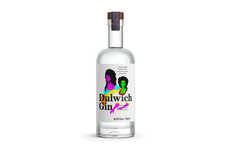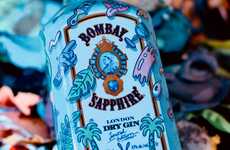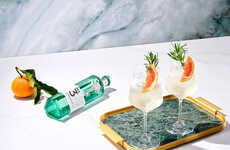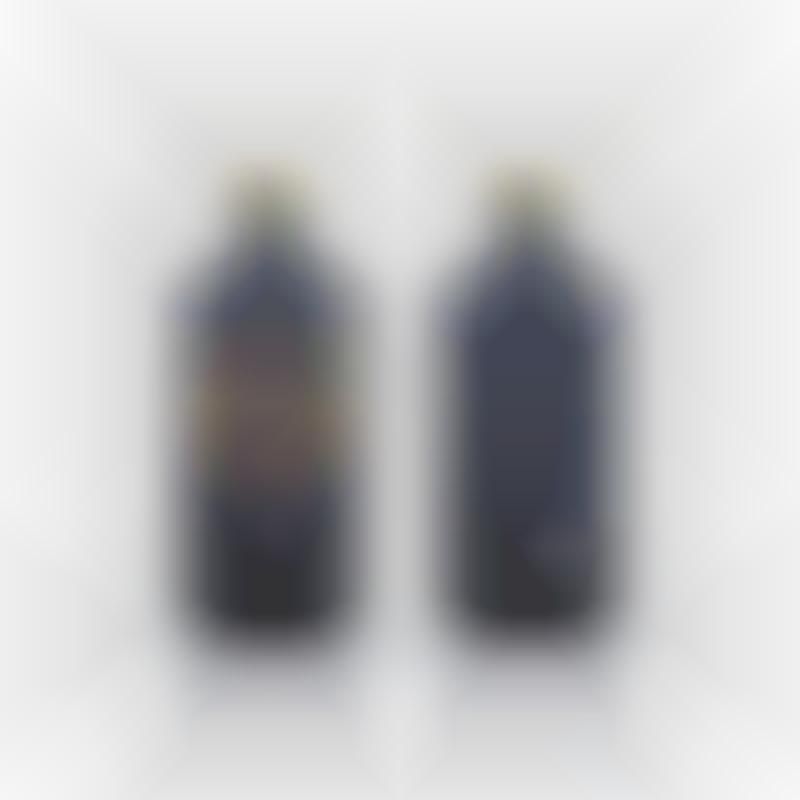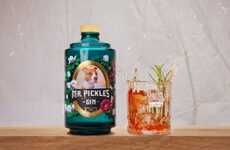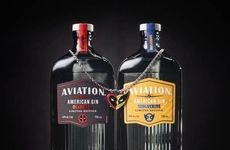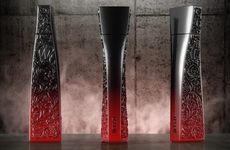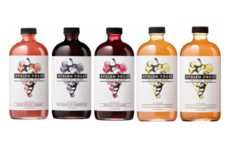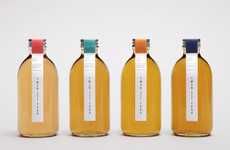
The Blind Tiger Gin Labels Honor Traditions of the Prohibition Period
References: facebook & thedieline
Deluxe Distillery created the labels for the Blind Tiger Gin, which reveals a golden tiger's face wearing an eye patch atop a navy blue bottle of gin. The overall inspiration for the gin and label come from the prohibition period.
In honor of prohibition, this bottle pays tribute to the unique distribution practices of gin. During the alcohol ban, a speakeasy would sell tickets for consumers to see a blind tiger in the back room of a bar where they would receive a complimentary gin cocktail. Today, the Blind Tiger Gin is made in the back room of a secluded distillery in Western Belgium.
The label and creative process honor the historical past of gin. This particular spirit is hand-crafted with notes of highly unusual botanicals such as malted barley and cubeb pepper.
In honor of prohibition, this bottle pays tribute to the unique distribution practices of gin. During the alcohol ban, a speakeasy would sell tickets for consumers to see a blind tiger in the back room of a bar where they would receive a complimentary gin cocktail. Today, the Blind Tiger Gin is made in the back room of a secluded distillery in Western Belgium.
The label and creative process honor the historical past of gin. This particular spirit is hand-crafted with notes of highly unusual botanicals such as malted barley and cubeb pepper.
Trend Themes
1. Prohibition-themed Packaging - Opportunity for distilleries to create unique packaging designs inspired by the prohibition period, capturing consumer attention and telling a compelling story.
2. Craft Distillery Tourism - Craft distilleries can capitalize on the interest in traditional production methods by offering tours and experiences that showcase the history and craftsmanship behind their spirits.
3. Unconventional Botanical Blends - Opportunity for distillers to experiment with unusual botanical ingredients in their gin formulations, offering consumers unique and flavorful experiences.
Industry Implications
1. Alcoholic Beverages - Distilleries can differentiate themselves and attract consumers by leveraging innovative packaging designs and incorporating historical narratives into their brand storytelling.
2. Tourism and Hospitality - Craft distilleries can partner with tourism organizations to create immersive experiences that capitalize on the demand for authentic, history-focused attractions.
3. Food and Beverage - Restaurants and bars can feature craft gins with unconventional botanical blends on their menus, catering to adventurous consumers seeking unique taste experiences.
5.8
Score
Popularity
Activity
Freshness


